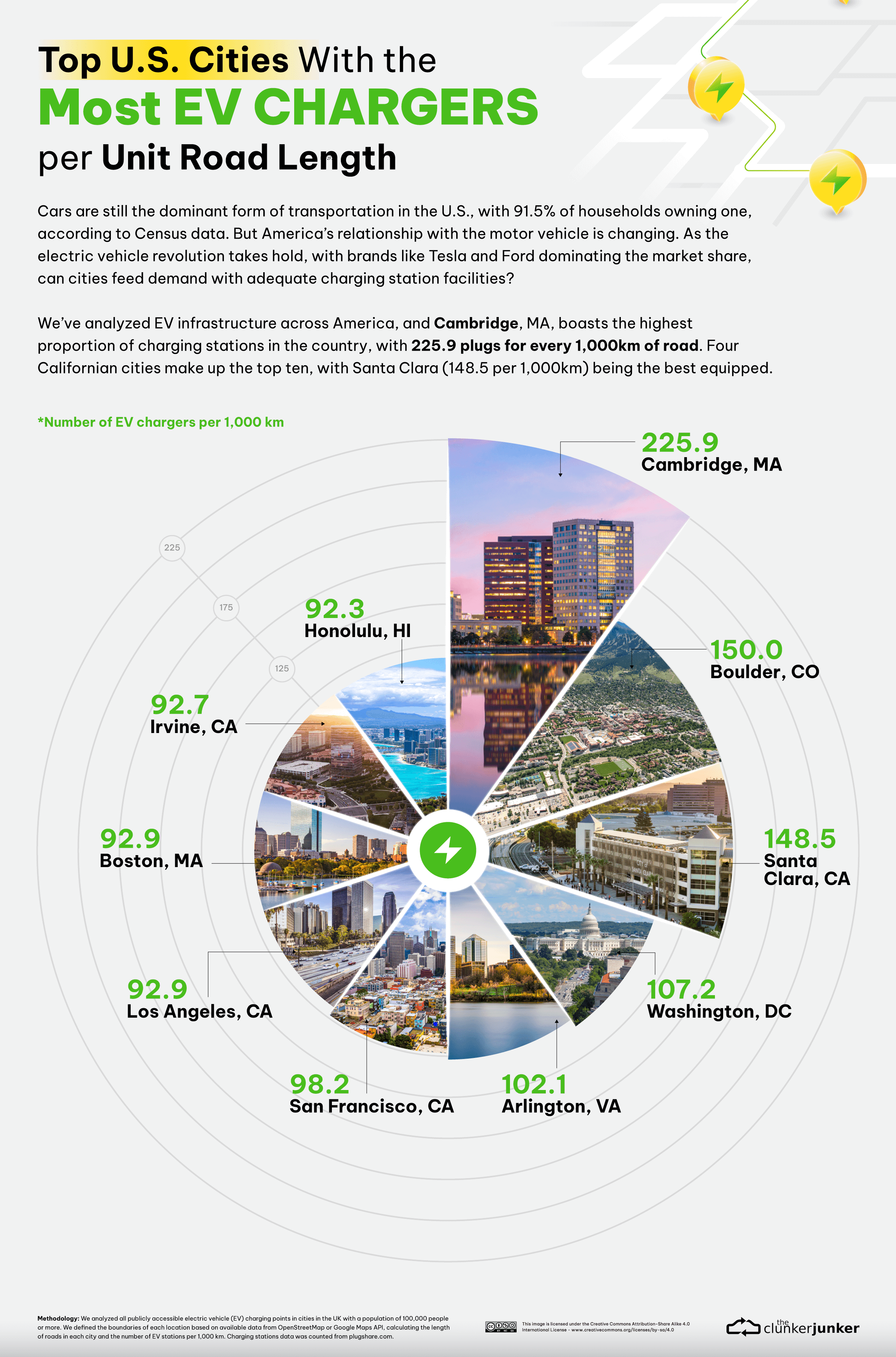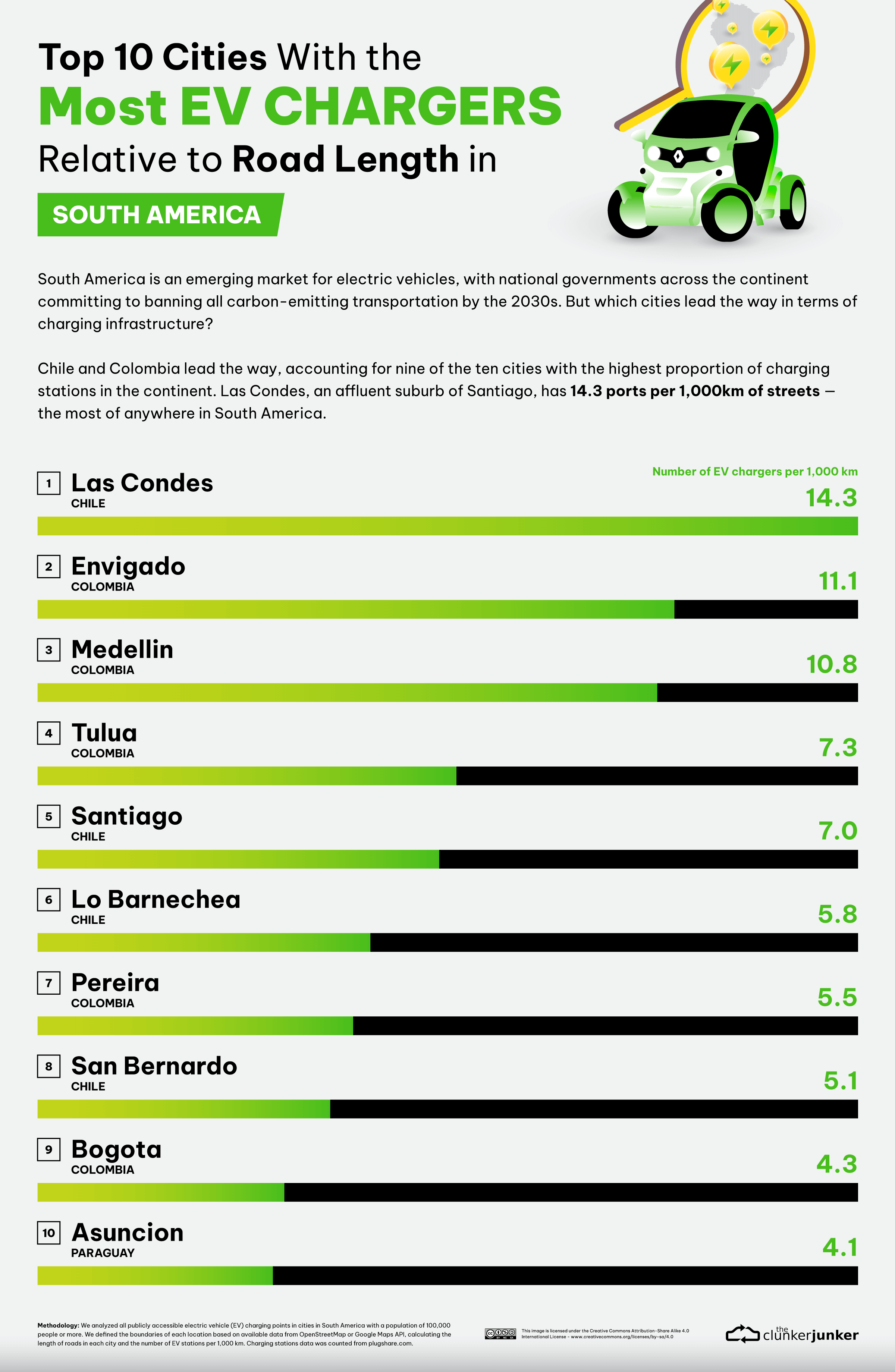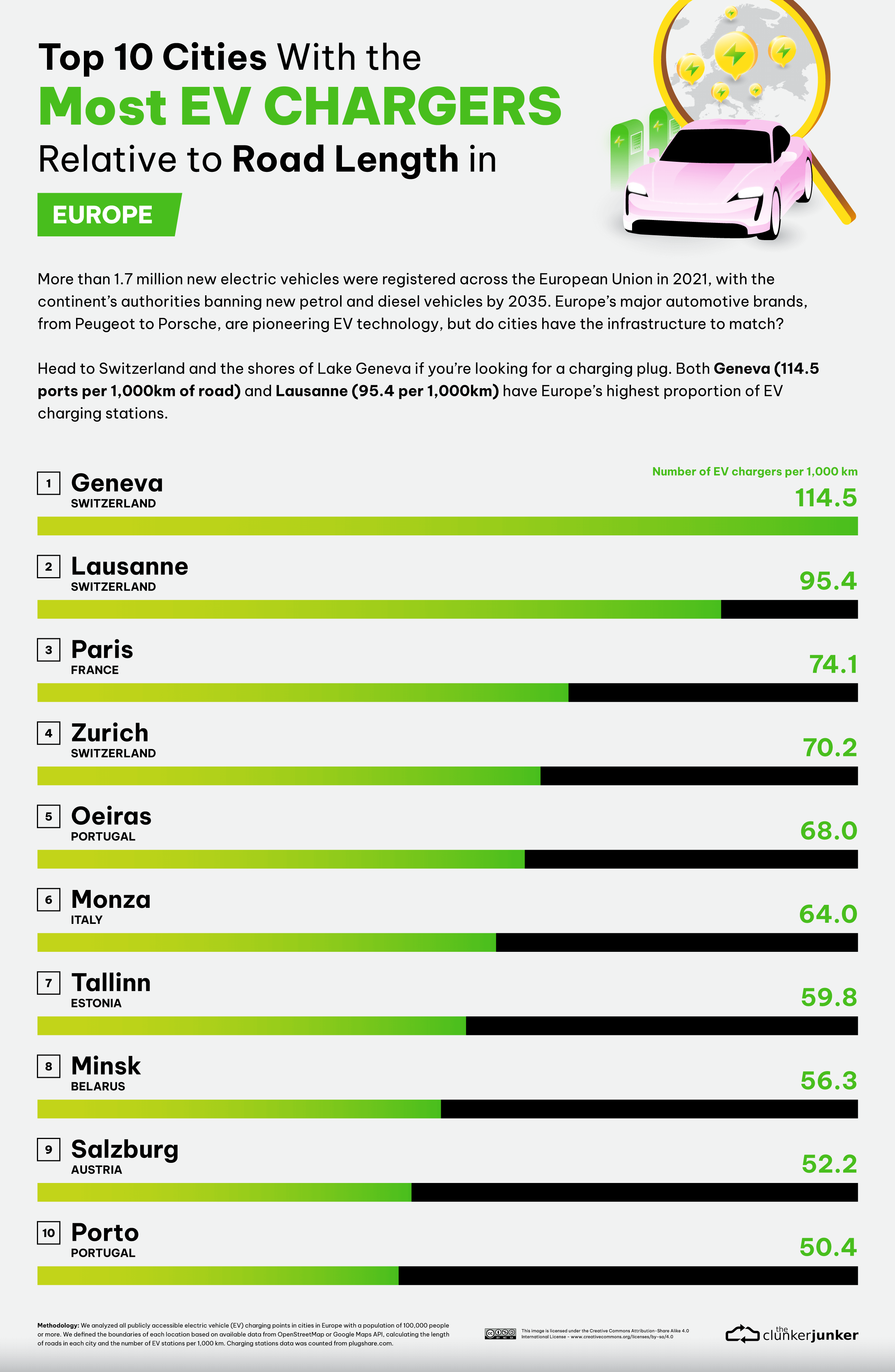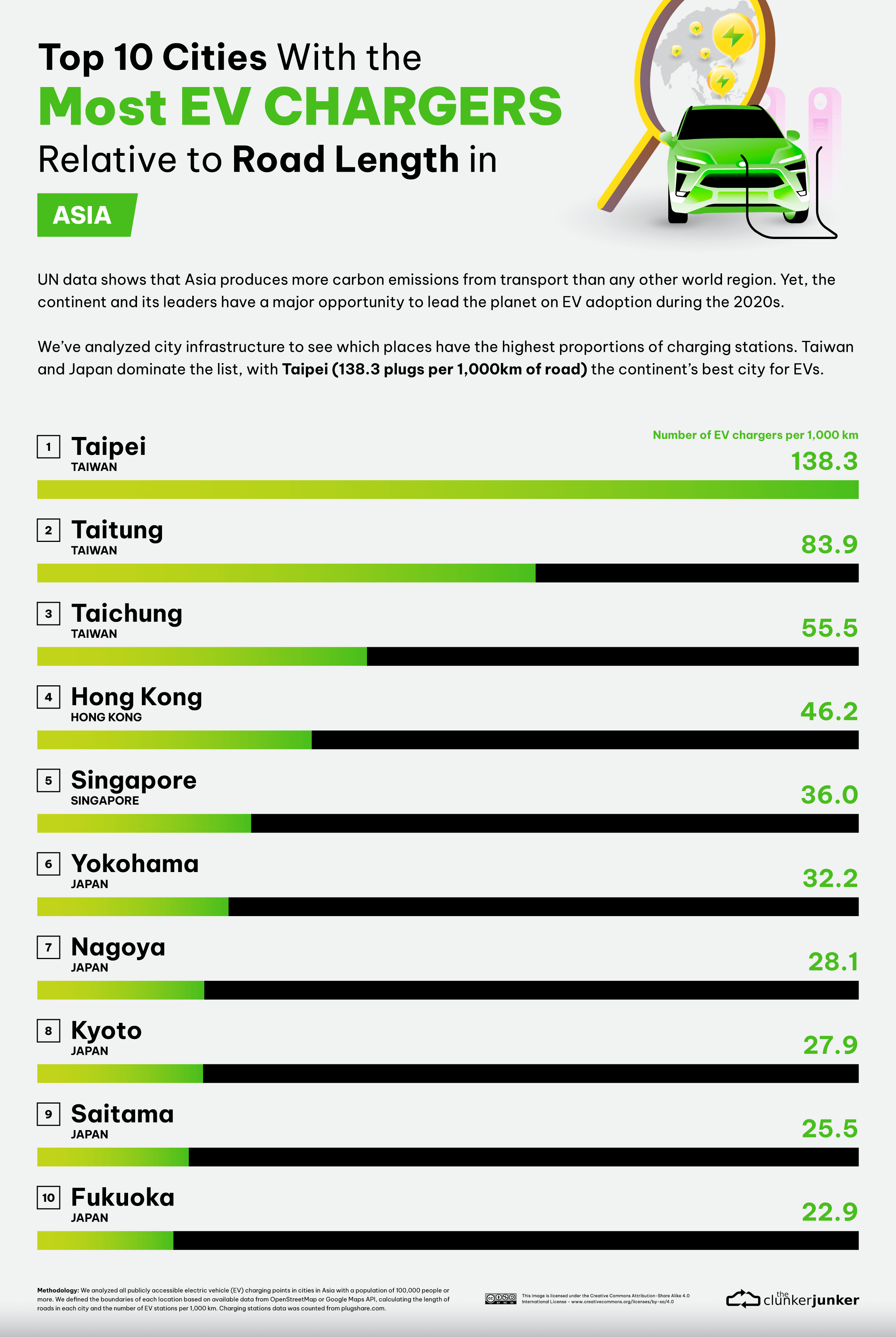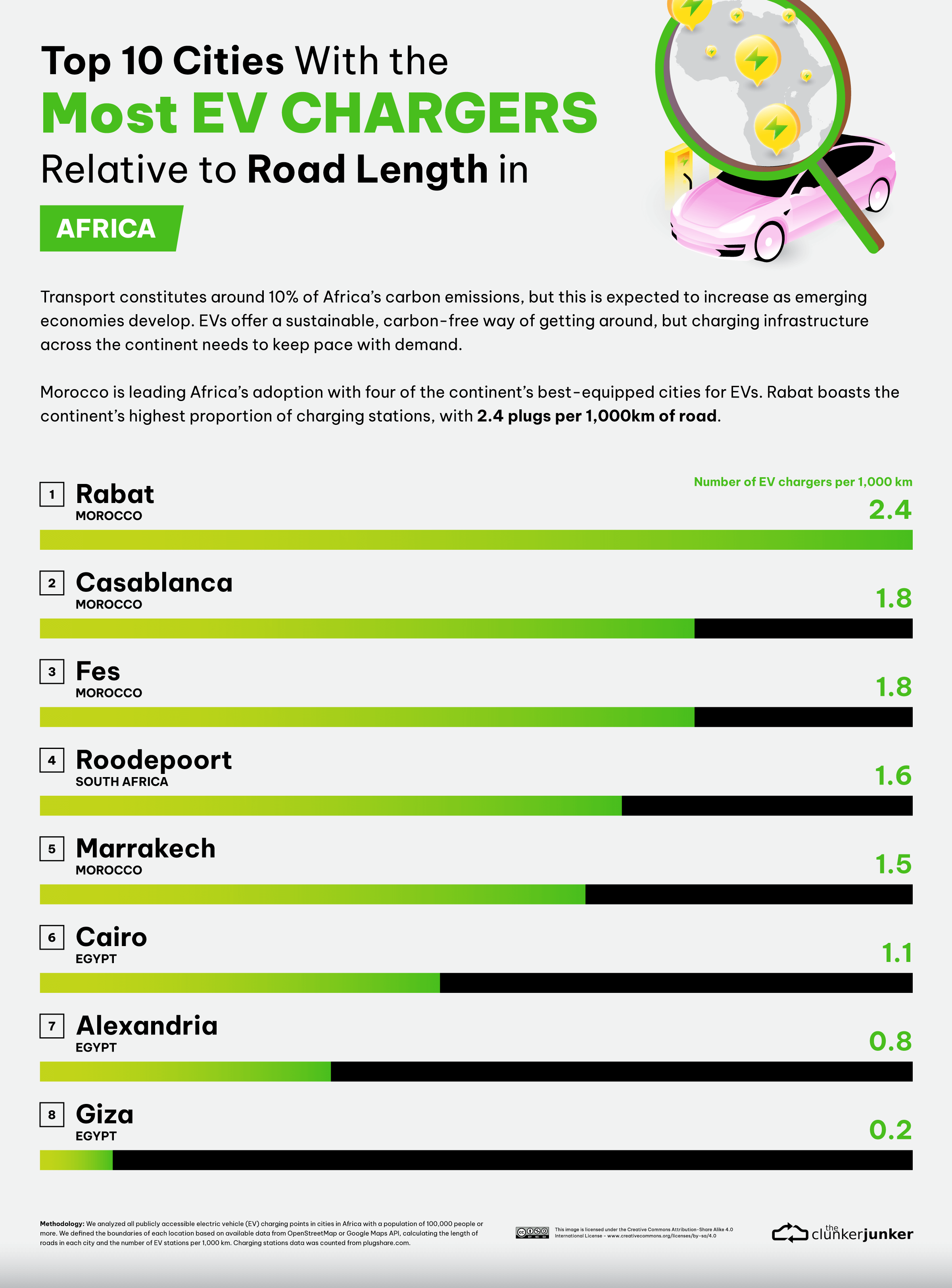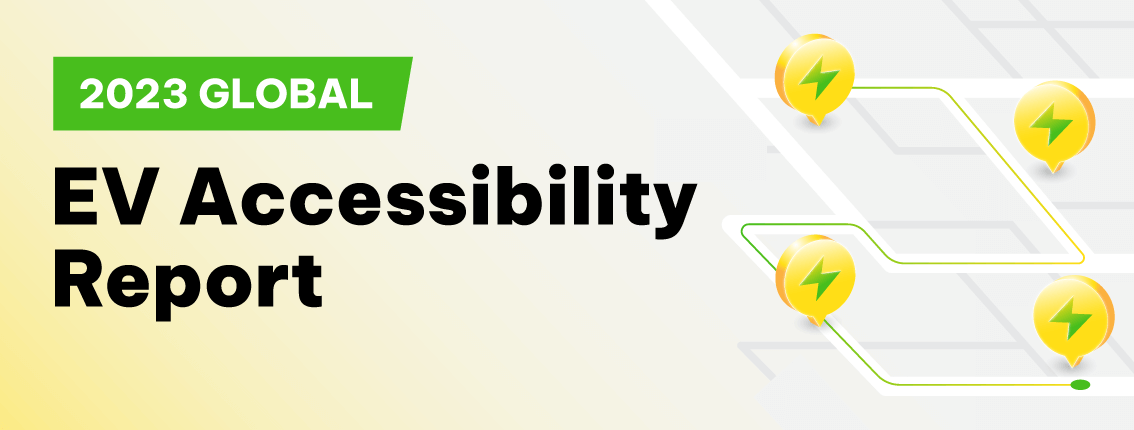
EV Accessibility Report - Which Global Cities Have the Most EV Chargers?
April 11, 2023
The electric vehicle’s history can be traced back to the 1830s when Scottish inventor Robert Anderson created a battery-powered carriage using DC motors. By 1890, an American engineer named William Morrison had developed the first commercially successful electric vehicle to be sold in the U.S. market, and by 1914, they were outselling gasoline-powered cars.
History changed course when Henry Ford introduced the world to the Model T, capitalizing on the unreliability and short battery life of electric vehicles with a universal car that was easily mass-produced. Ford paved the way for gasoline-powered vehicles to dominate roads for over a century, forever changing the landscape of private transportation.
Fast forward 100 years and the pendulum is now swinging back in favor of the electric vehicle. Tesla’s disruption of the industry, combined with a global need to reduce carbon emissions in the transportation sector, has flooded the market with new EVs. Data from the International Energy Agency (IEA) shows that, as of 2022, 16.5 million battery-powered vehicles are now on the world’s roads.
Global sales are being aided by policy action, with local and national governments legislating to ban the sale of petrol and diesel cars within a generation. While this is welcome progress in the world’s fight against the climate crisis, are our towns and cities equipped enough to handle the demand for vehicle charging?
What We Did
The Clunker Junker analyzed all EV charging points in global cities with a population greater than 100,000 using publicly available data from OpenStreetMap or Google Maps API to define the locations and calculate the length of available roads in each city. We sourced EV charging station data from plugshare.com, ensuring that all locations were within area boundaries.
Key Findings
- Cambridge, Massachusetts, has the highest proportion of charging stations in the U.S. and the world, with 225.9 plugs per 1,000 km of road in the city.
- Seven of the ten cities with the most charging stations per 1,000 km of city road are located in America.
- Geneva (114.5 chargers per 1,000 km) and Lausanne (95.4 per 1,000 km) have Europe’s highest proportion of EV charging stations.
- Two Dorset cities — Bournemouth (47.1 charging stations per 1,000 km) and Poole (41.9 per 1,000 km) are home to the most charging stations in the UK.
Which Cities Boast The Best EV Infrastructure?
There are few annoyances greater than traveling on the road, realizing you’re low on fuel and not knowing where the nearest gas station is. But while drivers of electric vehicles need not worry about gas, they do need to know where to go when they need to plug in.
Using the interactive tool below, find out which cities near and far have the most charging stations relative to road length.
America’s Major Urban Areas are Best-Equipped Globally to Handle EV Demand
Global EV sales hit record highs in 2021, accounting for 9% of all vehicle sales, according to the IEA. Their latest report estimates that by 2030, 60% of vehicle sales will be electric. From increased reliability to reduced costs on replacement parts, owning an EV offers a number of benefits to the consumer, including saving money by eliminating the need to pay for gas.
However, a concern for many drivers is battery range — that their EV won’t last long enough to complete a journey. In the U.S., 80% of EV owners charge their vehicle at home, but is there sufficient infrastructure for drivers to charge on the go?
Our research shows that America’s major cities are the best equipped to handle future EV demand. Seven of the ten areas with the highest proportions of charging stations are located in the U.S., including its capital Washington D.C. The only city outside of North America in the top 10 is Taipei, Taiwan, with 138.3 plugs per 1,000 km of road.
Cambridge, Massachusetts, Has America’s Highest Proportion of EV Chargers
While the U.S. leads the way with charging infrastructure in major cities, government policy is needed to help meet demand. In February 2023, the Biden administration announced a $7.5 billion investment in EV charging infrastructure, with the U.S. already committing to a national network of around 500,000 chargers across the country.
Across America’s cities, Cambridge, MA, has the highest proportion of charging stations, with 225.9 plugs per 1,000 km of road. Cambridge is home to Harvard University, which has installed dozens of EV charging stations across its campus. Though nearby Boston is also among the country’s best-equipped cities for infrastructure, with 92.9 plugs per 1,000 km, there are calls to upgrade its power supply infrastructure to keep pace with the city’s EV demand.
EV Chargers Plentiful in UK Cites of Bournemouth and Poole
In March 2022, the UK government announced that it would invest £1.6 billion to support 300,000 new EV charging stations across the country by 2030 as part of its wider EV infrastructure strategy. Critics argue that the plan is insufficient, as there are now 30 vehicles for every charging point in Britain, and current infrastructure is ill-equipped to meet demand.
However, EV charger adoption is more widespread in some of the UK’s major cities. The Dorset conurbation of Bournemouth (47.1 plugs per 1,000 km of road) and Poole (41.9 per 1,000 km) is home to the highest proportion of chargers. The county is among the most car-dependant areas in England and Wales, and local authorities have backed fast-charging points to promote tourism and leisure visits to the city.
London also benefits from an abundance of EV chargers. Transport for London (TfL) has increased plugs in the capital by 85% since 2019 and accounts for a third of the UK’s total EV infrastructure. Our research shows that there are 41.9 charging stations for every 1,000 km of road in the capital. The city has been slowly phasing out its iconic black taxis in favor of an all-electric fleet, encouraging drivers to switch vehicles with tax exemptions.
U.S. and Canada Dominate North America’s EV Revolution
Data from Research and Markets estimates that North America will have 19.6 million charging stations by 2026. The surge in demand for EVs across the continent has been influenced by major backing by the Biden administration in the U.S., with more than $100 billion of manufacturing investment towards battery and charger technology that can support the whole of North America.
While Canada has built 22,000 chargers to date, this is considerably short of its target of 200,000 by 2030 to meet its Net Zero pledges. In response to this, Canada’s Infrastructure Bank announced a $500m pledge to expand the country’s charging infrastructure network and make it easier for Canadians to switch to EVs in the future.
Two major Canadian cities appear in the top ten: Montreal (187.2 plugs per 1,000 km of road) and Vancouver (113.6 plugs per 1,000 km). Both cities have benefited from $1 billion of central government spending on charging stations since 2016. Elsewhere, three cities in California feature in the top ten, with two of the Bay Area’s major population centers — Santa Clara (148.5 plugs per 1,000 km of road) and San Francisco (98.2 per 1,000 km) among the country’s best-equipped.
Cities in Chile and Colombia Adapt Best for Transition to EVs
By contrast to North America, EV adoption in South America has been more lackluster, withjust 25,000 EVs sold in the LATAM region in 2021. However, the market is growing, and Statista estimates the continent’s EV sector to be worth $1.1 billion – potentially rising to $2.4 billion by 2026. Transportation is a major contributor to the continent’s carbon footprint, representing 35% of its total emissions — considerably higher than the 22% global average.
Our data shows that two South American countries have the highest proportion of charging infrastructure, with cities in Chile and Colombia accounting for nine of the top spots. Las Condes, an affluent suburb of Chile’s capital Santiago, offers 14.3 plugs for every 1,000 km of road — the most of any city. Chile’s government has made electric mobility a priority, acknowledging that road transportation accounts for a quarter of its national carbon emissions and responding with a ban on petrol and diesel-powered road vehicles by 2035.
Colombia’s government has made similar pledges, setting a target of registering 600,000 electric vehicles and infrastructure quotas in 15 cities. Two of its cities — Envigado (11.1 chargers per 1,000 km of road) and its larger neighbor Medellin (10.8 per 1,000 km), already have significant charging facilities.
Swiss Cities Lead Development of Europe’s EV Charging Infrastructure
Europe has major ambitions when it comes to electric vehicles. The European Commission wants to see 30 million EVs on the continent’s roads by the end of the decade, banning non-electric cars by 2035. However, charging infrastructure isn’t keeping pace with the bloc’s lofty goals. Analysis from McKinsey suggests that the pace of public charger installations in Europe must quadruple by 2025 to meet demand.
Despite its exclusion from EU regulations and resources, our research shows that Switzerland’s major cities are leading the continent on charger infrastructure, with three of its urban areas containing the highest plug proportions. Geneva (114.5 charging stations per 1,000 km of road) and nearby Lausanne (95.4 per 1,000 km) have Europe’s most-ample infrastructure. However, Swiss lawmakers proposed a limit on EV charging in December 2022 amid power shortages — a move that angered auto lobbies in the country.
Paris has the highest proportion of chargers for a major city within the EU27, with 74.1 plugs per 1,000 km of road in the city. It is one of Europe’s most congested and heavily polluted cities due to heavy road traffic — which authorities seek to curb ahead of the 2024 Olympic Games. However, there are local concerns around the price of charging — as energy supplier Total monopolizes the city’s 2,300+ EV stations.
Taiwan’s EV Infrastructure in A League of Its Own
Nowhere in the world is the case for electrification of private vehicles more prominent than in Asia. According to McKinsey, its transport sector alone accounts for 17% of the world’s carbon emissions, and the continent is home to 93 of the world’s 100 most-polluted cities. Widespread adoption of EV technology across Asia will be key to global decarbonization efforts.
When it comes to public infrastructure, nobody moves faster than China. In 2022 alone, it installed 650,000 new charging stations across the country, ten times more than in the U.S. and a far cry from its starting point of 30,000 a decade ago. However, our data shows that other major cities across Asia surpass it when comparing charging infrastructure with navigable road lengths.
With 138.9 plugs per 1,000 km of road in Taipei, Taiwan’s capital boasts the continent’s highest proportion of charging stations of any city in Asia. Two other cities on the island — Taitung (83.9 per 1,000 km) and Taichung (55.5 per 1,000 km), are also among Asia’s highest. Taiwan’s government has made EV infrastructure a priority, banning fuel-powered vehicles by 2040 and pledging to install 6,500 charging stations around the country by 2025, which can support 226,000 vehicles on its roads.
New Zealand’s EV Charging Focus Makes It ‘Norway of the Pacific’
While Oceania is a comparatively small market for EVs, the region has one of the world’s major success stories in the electrification of private transport — New Zealand. With a population of just 5.1 million and 87% of its residents living in urban areas, it is an ideal candidate to be a world leader in rolling out EVs. In December 2022, 20% of all new cars sold in the country were electric, boosted by a highly successful rebate scheme that allows residents to claim $8,000 (NZ) back from the government when trading in their old car.
Does this translate to availability of charging stations? Our research shows four of New Zealand’s major cities — all on its North Island, have the highest proportion of plug-in ports in Oceania. Hamilton (22.2 chargers per 1,000 km of road) leads the way, and its council works closely with central government to provide stations around the city.
By comparison, Australia is struggling to implement EV technology at the same rate, with just 50,000 plug-in vehicles on the road across the entire country in 2022 and with many charging stations in Australia’s major cities failing to operate as intended. There is hope that a$171m fund for EV charging technology in New South Wales will improve access to plug-in ports for the country’s densest populations. Currently, the state’s second-largest city Newcastle (9.1 chargers per 100,000 km of road) is the only location with more than nine ports for every 100,000 km of city streets.
Morocco Leads Africa’s Slow but Developing EV Adoption Momentum
While many of the world’s leading economies have committed to and are in the process of phasing out petrol and diesel vehicles, a combination of factors makes the task in Africa more challenging. A 2019 study found that of 34 major African countries, more than half reported unreliable levels of electricity, and it currently imports more than half of the world’s second-hand cars, according to UN data.
Despite this, African governments are prioritizing e-mobility, with investment in charging stations in South Africa, Kenya and Morocco contributing to a growing industry backed by automotive giants, such as Audi, and supported by regional EV startups, including Ampersand.
Morocco, in particular, is a fast-growing nation for EV technology, boosted by its ambitions of becoming a major producer and exporter of battery-powered vehicles to Europe. Our research shows that three of Morocco’s cities have the largest proportion of charging stations in Africa, with its capital Rabat (2.4 plugs per 100,000 km of road) containing the most.
Global Charging Facilities Must Keep Pace With Growing EV Demand in Cities
The world’s urban areas produce more than 60% of the world’s carbon emissions, and controlling their output, according to the UN’s Climate Summit for Cities, will be key to tackling climate change. Governments around the world continue to incentivize EV ownership as a means of creating a more sustainable society, particularly in major cities. Many countries now adopt rebate schemes to encourage drivers to switch to battery-powered vehicles. The IRS, for example, offers a $7,500 credit if you buy a new electric car between 2023 and 2032 in the U.S. as part of a domestic tax return.
However, the concern still plagues city-dwellers globally — does my hometown have enough charging stations to plug my car in while I’m on the move? Explore the full data set in our interactive table below, allowing you to see how your city compares to others in your country and around the world.
Initiatives like zero-emission zones and sustainable transport programs are important. Electrifying cars while taking petrol and diesel vehicles off the road and providing ample charging infrastructure will future-proof cities and reduce their carbon footprints for decades to come. While China continues to accelerate its rapid rollout of charging stations across its cities, the rest of the world, particularly the U.S., is starting to catch up.
Methodology & Sources
We analyzed all electric vehicle (EV) charging points in cities in each country with a population of 100,000 people or more. We defined the boundaries of each location based on available data from OpenStreetMap or Google Maps API or the intersection of both sources.
Using Python’s osmpy module — a software engineering tool — we calculated the length of roads in each city. All road types were considered in our calculations except for ‘residential’ and ‘restricted.’
The number of EV charging stations per city was counted from plugshare.com within the same boundaries as specified above. EV charging station counts are updated nightly by PlugShare.
Our counts excluded ‘restricted locations’ and ‘residential locations’ to ensure that the charging stations in our analysis were publicly accessible.
Finally, we calculated the number of EV stations per 1,000 km and ranked each city by this parameter.
The data is accurate as of 23rd January 2023.

